Indoor Robots Size
Market Size Snapshot
| Year | Value |
|---|---|
| 2024 | USD 18.8 Billion |
| 2032 | USD 90.1 Billion |
| CAGR (2024-2032) | 21.58 % |
Note – Market size depicts the revenue generated over the financial year
Indoor robots are expected to grow at a substantial rate, with a present value of $ 18.8 billion in 2024 rising to $ 90.1 billion in 2032. The annual growth rate of this market is expected to be 21.4 per cent over the forecast period. The high growth rate reflects the increasing adoption of automation in the medical, hospitality and domestic services industries, where efficiency and precision are essential. This is being driven by a number of factors, including advances in artificial intelligence, machine learning and robotics that have increased the capabilities and functions of these robots. Also driving the market is the increasing demand for smart home devices and the growing need for labour-saving solutions. The leading players in the market, such as iRobot, SoftBank Robotics and Amazon Robotics, are investing heavily in research and development, entering into strategic alliances and launching new products in order to capture market share. iRobot’s recent launch of advanced robot vacuum cleaners with artificial intelligence-based navigation systems is an example of the ongoing development in this market.
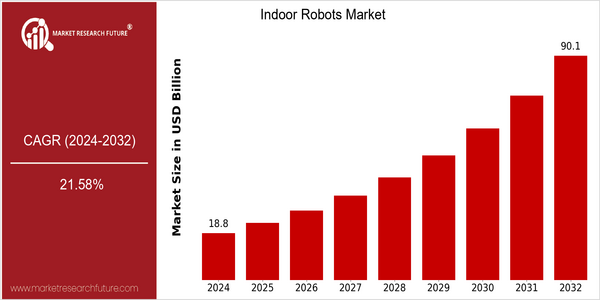
Regional Market Size
Regional Deep Dive
Indoor robots market is a global market, which is mainly driven by technological advances, the increasing demand for automation and changing consumer preferences. The North American market is characterized by the strong presence of major players and the high rate of adoption of smart home technology. Europe is characterized by its diversity, a focus on innovation and the development of sustainable solutions, while the Asia-Pacific region is emerging as a manufacturing and technological hub for robots. The Middle East and Africa are gradually adopting this technology, influenced by the diversification of the economy. Latin America is beginning to explore the potential of indoor robots in various industries, such as health and hospitality.
Europe
- European countries are increasingly focusing on sustainability, with companies like Dyson and Bosch investing in energy-efficient indoor robots that align with the EU's green policies.
- The European Union's Robotics Strategy aims to foster innovation and collaboration among member states, which is likely to accelerate the development and adoption of indoor robots across various industries.
Asia Pacific
- Japan and South Korea are leading the charge in robotics innovation, with companies like SoftBank Robotics and Samsung developing advanced indoor robots for both consumer and commercial applications.
- Government initiatives in countries like China are heavily investing in robotics as part of their 'Made in China 2025' strategy, which is expected to significantly boost local manufacturing capabilities and market growth.
Latin America
- Brazil is beginning to see a rise in the adoption of indoor robots, particularly in the cleaning and healthcare sectors, driven by increasing urbanization and a growing middle class.
- Local startups are emerging in countries like Mexico, focusing on developing affordable indoor robotic solutions tailored to the unique needs of the Latin American market.
North America
- The rise of smart home ecosystems has led to increased integration of indoor robots, with companies like iRobot and Ecovacs expanding their product lines to include advanced features such as AI and machine learning capabilities.
- Regulatory support for automation technologies is evident, with initiatives from the U.S. government promoting robotics in manufacturing and service sectors, which is expected to enhance the market landscape.
Middle East And Africa
- The UAE is at the forefront of adopting indoor robots, with initiatives like the Dubai Robotics and AI Strategy aiming to integrate robotics into various sectors, including hospitality and healthcare.
- Economic diversification efforts in countries like Saudi Arabia are driving investments in technology, which is expected to create new opportunities for indoor robots in both residential and commercial spaces.
Did You Know?
“As of 2023, it is estimated that over 30% of households in North America own at least one type of indoor robot, highlighting the growing acceptance and reliance on automation in daily life.” — Consumer Technology Association
Segmental Market Size
Indoor robots market is experiencing robust growth, driven by increasing automation and efficiency in domestic and commercial settings. This trend is being driven by the growing need for labor-saving devices, the growing trend of smart homes, and advancements in artificial intelligence. These factors are shaping customer expectations and forcing manufacturers to keep up with innovation. Indoor robots are currently being introduced in large numbers. iRobot and Ecovacs are leading the market for domestic cleaning robots, while Fetch Robotics is making inroads in the warehouse automation sector. Among the main applications are vacuuming, lawn mowing, and security patrols. Further growth is being driven by macro-economic trends, such as the COVID19 pandemic, which is increasing demand for non-contact solutions. Indoor robots are also benefitting from the development of machine learning and computer vision. These technologies are enabling them to navigate complex environments and perform tasks more effectively and with less human intervention.
Future Outlook
The market for domestic robots is expected to soar from $18.8 billion in 2024 to $90 billion in 2032, with a CAGR of 21.58%. A strong growth driver is the increasing automation in both the domestic and commercial fields, along with the rapid development of artificial intelligence and robotics. By 2032, domestic robots will be in 30 per cent of households in developed countries, bringing greater convenience and efficiency to daily life. The main technological drivers include improvements in machine learning, sensors and the Internet of Things. All these will enhance the functionality and affordability of domestic robots. The market will also be accelerated by government support for automation and smart home technology. The trend towards the integration of domestic robots into smart home systems, and the growing focus on sustainability, will also help shape the market. Domestic robots are likely to become more energy-efficient and multi-functional, as consumers look for solutions that meet their diverse needs and preferences.
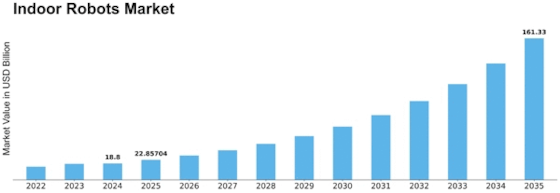
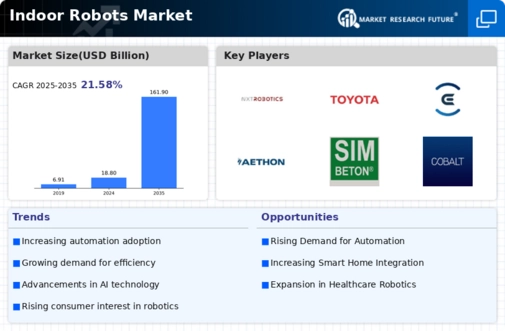


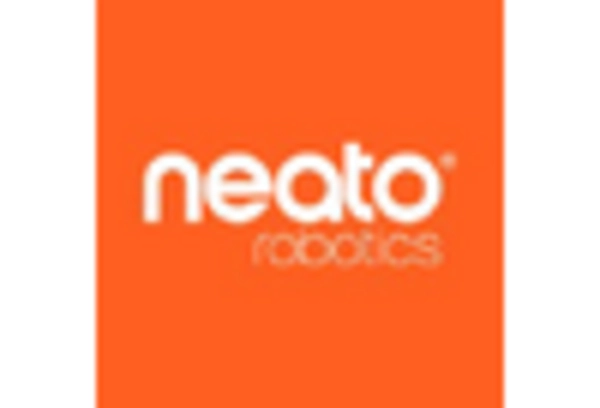


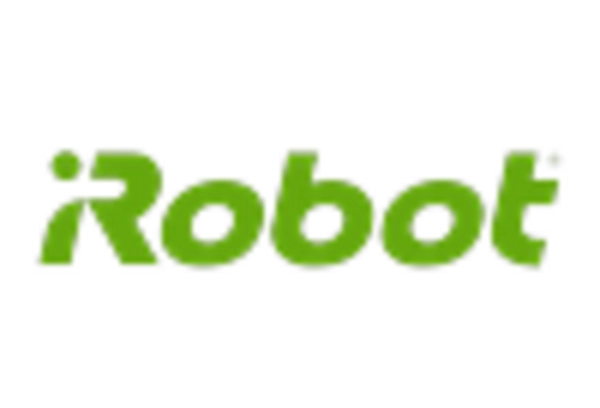









Leave a Comment